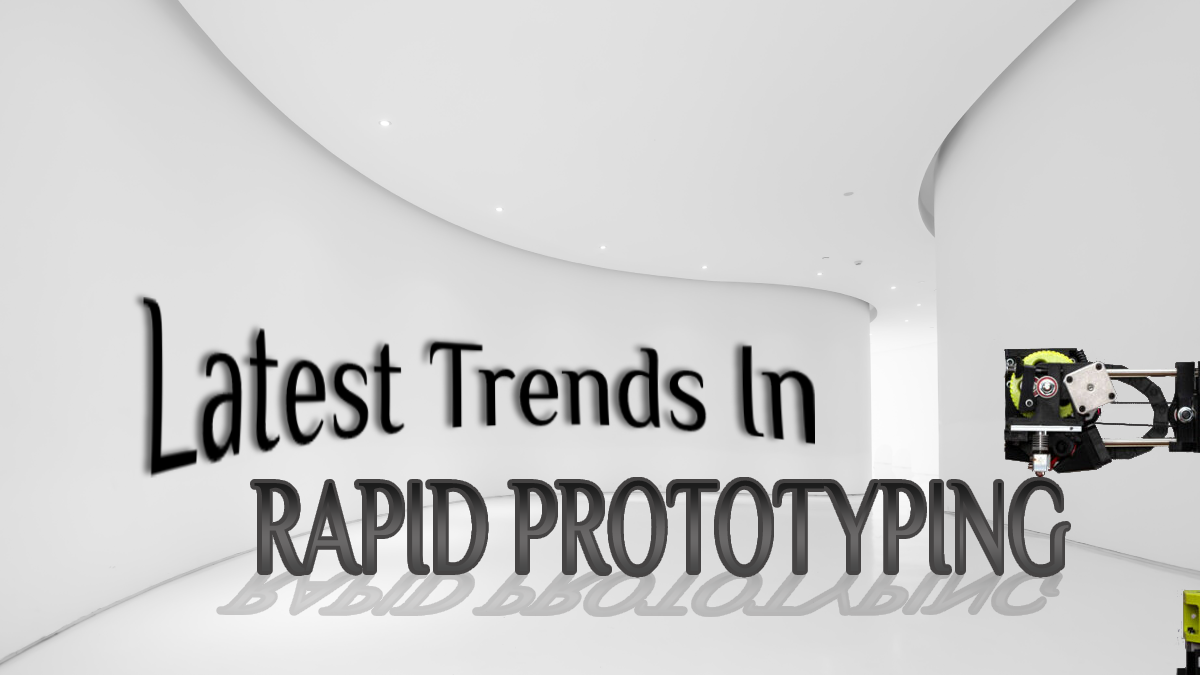Rapid prototyping techniques are not just evolving technologies, they’ve very much become mainstream design tools that organizations have adopted into their design process. The industry has seen an average annual growth of 27% since 2015 and the market is expected to be worth around $2.6 billion by 2025.
Even though the technology is very much mainstream, it has hardly become stagnant. The industry is constantly being developing new techniques and they’re finding new applications. While it may have fallen short of expectations during its initial phases in the early 2010s, the industry is very much active and constantly innovating. In this article, we explore some of the latest trends in rapid prototyping and its benefits.
What is rapid prototyping?
Rapid prototyping is a group of techniques design teams uses to develop models (working or otherwise) during product development. 3D printing and CNC machining are two popular examples of rapid prototyping techniques. 3D printing or additive manufacturing and CNC or subtractive manufacturing are further umbrella terms experts use to refer to a whole array of techniques. As the name implies, additive manufacturing involves adding materials on top of each other, while subtractive manufacturing is about removing material from a workpiece to produce the final result.
Companies rarely used rapid prototyping for developing final products and as such, the focus on these techniques is not on the aesthetics but rather on cost and speed. Unlike mass-production techniques, rapid prototyping doesn’t need specific tooling. The same equipment can produce different products, drastically bringing down the cost of prototyping.
What are the latest trends in rapid prototyping?
1. Wider applications
Initially, materials limited rapid prototyping to very applications. Good quality prototypes were expensive and only companies with huge R&D divisions could afford them. But over the years, these technologies have been more accessible and cost-effective even for small organizations.
These days you don’t have to limit materials to just ABS, PLA, or nylon, there are companies building concrete homes using additive manufacturing techniques. Technologies like metal 3D printing have come a long way and design labs use them regularly. In fact, companies like Relativity Space are using huge metal 3D printers to make rocket engines.
There have also been significant advances in using 3D printing in medicine. Scientists and doctors have explored using tools, prosthetics, and implants custom printed for patients. Scientists have also made significant advances in printing live organs.
With high-quality prints, many companies have opted to use rapid prototyping techniques for making the final parts for complex machinery. They are able to save on costly tooling and time by going this route instead of traditional manufacturing processes.
2. Manufacturing as a Service
While rapid prototyping technologies have definitely become cheaper, for many small enterprises, it’s not cost-effective to invest in the equipment or personnel. If an organization’s R&D team doesn’t make prototypes often, the resources may cost unnecessary overheads for the company. This has created many businesses offering manufacturing as a service.
While this is not limited to prototyping and is often full-scale manufacturing, MaaS often uses techniques that had their beginnings in rapid prototyping. These companies offer manufacturing on-demand, allowing organizations to bring their designs to the mass market without developing dedicated manufacturing facilities or personnel. Manufacturing as a Service is expected to gain more traction in this decade.
3. Multi-material 3D printing
While the initial hype related to 3D printing suggested we would all be printing whatever we want in our homes (just like we print on paper), a couple of years in we learned that this is easier said than done. And the inability to print using multiple raw materials was one of the many reasons why.
It was not easy to add rubber components to plastic equipment all in one go. Of course, you could print these components separately and assemble them later, but it didn’t enhance the appeal of 3D printing compared to traditional manufacturing techniques.
Combining multiple materials meant a single component could have advanced functionalities. For example, you could print a sensor layer embedded within the materials, or electronic circuits within material skins.
And now many 3D printers offer this functionality. The technology is still in its early stages, but organizations are already offering this commercially.
4. AI in rapid prototyping
Even before the prototyping stage, during the design phase, many software applications have incorporated artificial intelligence. And researchers and enthusiasts have explored the idea of bringing AI to the actual prototyping step as well.
There are several benefits to AI to rapid prototyping. Even with advanced machines, rapid prototyping is tricky. Often the output is not up to expectations and in the case of 3D printing, the process is often a trial and error, with multiple fails in between. This is all right most of the time since the process is already cheap.
But now Inkbit, a company that focuses on building 3D printers has added cameras, machine vision, and ML. The machine essentially scans every layer after the print and adjusts the next layer accordingly. The idea is to reduce print fails, and when working with complex prints and materials, ensure that the print is coming up correctly, which can be tricky for small components.



